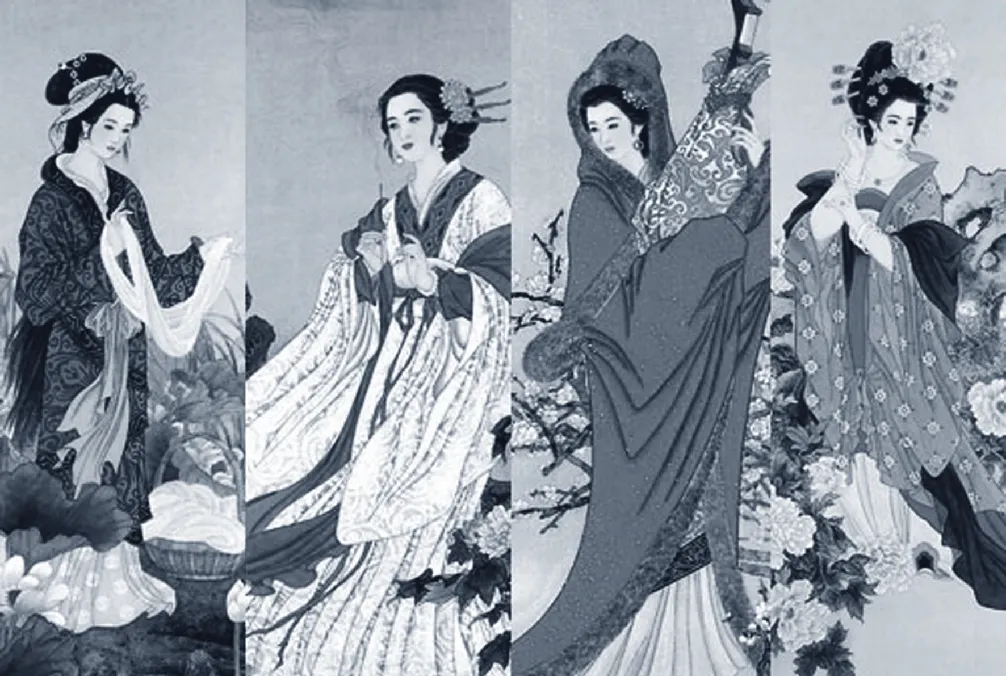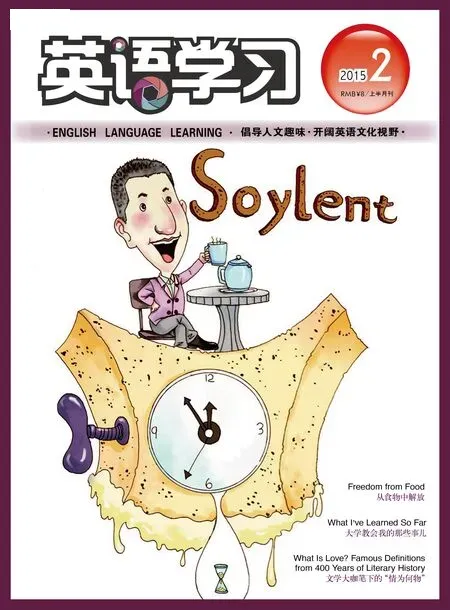说“美”
∷陈德彰
常言道“爱美之心人皆有之”,说明人们都喜欢美的东西,但是在不同人的心目中对“美”有不同的想法,也有不同的标准。本文开头这句话有两种英译:1. Everyone in the world wishes to be pretty. 这是说每个人都希望自己美,女性想成为靓女,所以爱打扮,以表现出女性特有的魅力(feminine charm),而男人希望有阳刚美(virility)而成为靓仔(男女“靓”的译法不一样,女的是beautiful,而男的是handsome)。2. Loving beauty is part of human nature. 这是说喜爱美好事物的心态是人类共有的。
形容女人“美(丽)”,按程度可分别为beautiful,pretty,comely,笼统而言也可以说attractive,charming或lovely。有一个词要注意,即homely,在英式英语里,这是一个褒义词,指一种朴素美,在美式英语中却带有贬义,意为相貌平平(look just so so,甚至singularly plain),不怎么好看。“妖娆”(enchanting/ fascinating / bewitching /coquettish)甚至“妖艳”(seductive)的美女则成了一种诱惑,常常造成“英雄难过美人关”(A hero can hardly resist the temptation of a beauty.)。古希腊神话里就有许多为争夺美女而发动战争的故事,以特洛伊木马(Trojan Horse)著称、历时10年的特洛伊之战就是为了抢夺美女海伦(Helen)。英国历史上还有一个“爱美人不爱江山”(Love the beauty rather than the throne)的温莎公爵(Duke of Windsor,原名Edward,原为英王爱德华八世King Edward VIII),因为爱上结过两次婚的辛普森夫人(Wallis Simpson),遭到人民和教会的反对,因此他为了爱情宁愿选择退位(abdicate),自动放弃了英国国王的身份。
中国古代有四大美女,即西施、王昭君、貂蝉和杨玉环(杨贵妃)。“贵妃”是称呼,英文解释性地译为highestranking imperial concubine。因为concubine一词有不好的联想,所以京剧《贵妃醉酒》则干脆译为Drunken Beauty。因为貂蝉是《三国演义》(The Romance of the Three Kingdoms,作于元末明初)里才出现的人物,所以1909年在甘肃发现的南宋平阳木刻年画《四美图》,画的是王昭君、赵飞燕、班姬和绿珠。
美女被称为“佳人”、“丽人”、“佳丽”、“玉人”(以上四个词在英语中都是beautiful woman或beauty)、“尤物”(woman of great beauty),英语里则有belle,fair damsel。时下称呼美女的时髦词很多,如“美女”、“靓妹”、“美眉”(pretty brow)、“正妹”(hotty)、“萌妹子”(cute girl)、“甜姐儿”(sweet doll)、“萝莉”(Lolita,又称萝莉塔,原指1955年出版的小说 《洛丽塔》中的女主人公)、“飞飞女”( fly girl / provoking girl)、“女神”(goddess)、“天使”(angel)、“御姐/妹”(young princess)等等,不过有的显得很俗气。
“选美”(pageant / beauty contest)在各地都很受欢迎,车展(car exhibition)上的美女车模也很抢眼球(eyecatching)。选美讲究身材( figure)、三围(measures of the chest, waist and hips)和线条美(with an ideal contour)。不过各地评选“最美女法官”、“最美女教师/山村教师”、“最美山村医生”等,其中的“最美”英译时文不宜译为most beautiful,可说the best或the most respected / welcome /admired等。

古代四大美女(左起:西施、貂蝉、王昭君、杨玉环)
要注意的是,有些涉及“美人”、“美女”的词语英文说法不一样,如“美人计”是honey trap或badger game。 “美女挂历” 英文有个专门的说法:pinup calendar,大概是因为人们常将其撕下来钉在墙上的缘故。汉语中的“美女簪花”并不是说美女,而是指书法中优美的笔法,英文只能解释性地译为the graceful strokes of calligraphic works。
除了人,美的事物也很多,人们都喜欢美景(beautiful scenery / landscape),不少地方“山美水美人也美”(可以直译为The mountains are beautiful, so is the water, but the most beautiful are the people here. 有人采用形象说法而且押韵,译得更美:The hill’s rolling, rivers flow, and pretty girls in row and row.)。可是翻译也要考虑语境,例如“美不美,乡里水;亲不亲,故乡人”(Sweet or not, it is water from home; related to me or not, you are people from my hometown.)。这里的“水”并不指河流等,译成beautiful就不妥了。“最美夕阳红”则译为The setting sun is the most spectacular scene.不少人喜欢美酒(good / fine / excellent /choice vintage / wine)、美食( fine food / delicacy)。有意思的是,“西施舌”、“貂蝉豆腐”、“贵妃鸡”都和四大美女有关。看人不能光看外表,还要看气质(temperament / disposition),最好是“秀外慧中”(good looking and intelligent)。北京有一种萝卜,称为“心里美”(sweet pink- fleshed radish / roseheart radish),名字也很有意思。
人们喜欢自己有个“美名/美誉”(good name/repute)、“美称”(good name / laudatory title)。
有一阵子常说的“五讲四美三热爱”( five stresses and four points of beauty and three loves),其中“四美”是the beauty of mind, language, behavior and the environment,可是“语言美”译成beauty of language变成“语言本身的美了”,这属于语言学(linguistics)和美学(aesthetics)的范畴,而当时提出“语言美”是要人们注意说话文明,有礼貌,所以确切的译法应该是use civilized and polite language。不过也不是指“美言”(beautiful words / flowery speech;“替我美言几句”则是 Please put in a good word for me.),更不是“传为美谈”(be passed on / told from mouth to mouth with approval)。著名翻译家许渊冲先生提出译诗要做到意美、音美、形美(beautiful in sense, sound, and form)。常说的“美意”是good intention,但是“美意延年”(A carefree life insures longevity.)中的 “美意”却另有所指。
“美”字还有别的意思,“美德”是moral excellence,“美差”是cushy job,“日子过得美”是live quite happily,“美美地睡上一觉”说have a good sleep,“美滋滋”的意思是very pleased with oneself,“美声唱法”是bel canto。还要提一下,“美梦”(fond dream)带有贬义,指不太可能实现的梦想,所以不能把“中国梦”说成是一种“美梦”。
英语中最常用的表示“美”的词当数beautiful,此词含义丰富,包含以下方面(本文前面已提到的不再重复):lovely,dainty,glamorous,gorgeous,quaint,admirable,alluring,appealing,captivating,stunning,sensuous等,而表示不同的美,可以加上各种副词。下面列举一些常用的:deliciously,dazzlingly,singularly,remarkably,unbelievably,astonishingly,devastatingly,stunningly,sublimely,radiantly, flawlessly,exquisitely,voluptuously,stately,serenely,wildly,eerily,strangely,irregularly。大家在翻译或英文写作中可以选用,不要老是用beautiful。

